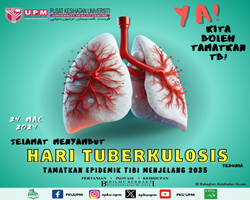ASBESTOSIS
Asbestosis is one of the occupational lung diseases. It is a widespread scarring of lung tissue caused by breathing asbestos dust. Workers who exposed to asbestos dust at workplace has increased risk of getting asbestosis.
Asbestos is a family of naturally occurring silicates (which are a type of mineral) whose heat-resistant and structural properties are useful in construction and shipbuilding materials, automobile brakes, and some textiles.
Asbestosis is a form of interstitial lung disease caused by asbestos exposure. The period between exposure to asbestos and disease presentation is usually 20 to 40 years. Asbestosis appears earlier in people who have had longer and more intense exposure to asbestos.

Risk factors
Direct occupational exposure remains the predominant cause of asbestos-related disease. In most developed countries, asbestos use has declined over the past several decades. Asbestos can still be found in old building materials and some products, and today most occupational exposures occur during repair, renovation, removal, or maintenance of asbestos-containing products installed in prior eras. Workplace exposure levels were generally much higher in the past.
Occupations that were traditionally associated with highest risk of exposure include construction trades (insulators, pipefitters, carpenters, electricians, roofers, drywall workers), maintenance workers, shipyard workers and Navy personnel, boilermakers and furnace workers, auto brake mechanics, and individuals involved with asbestos mining and processing.
Symptoms of Asbestosis
Symptoms of asbestosis appear gradually. The first symptoms are a mild shortness of breath and a decreased ability to exercise.
Generally, asbestosis progresses slowly over many years and can continue to progress after the person is no longer exposed to asbestos.
Severe cases can result in severe shortness of breath and a type of heart failure called cor pulmonale.
Diagnosis of Asbestosis
- A history of asbestos exposure.
- Chest imaging (x-ray or preferably high-resolution computed tomography).
Diagnosis of asbestosis is based on history of exposure to asbestos and chest imaging, such as chest x-ray or high-resolution computed tomography (CT).
Bronchoalveolar lavage (a minimally invasive procedure that involves instilling sterile salt water into the lungs, then removing the fluid for analysis) or lung biopsy is potentially useful when the diagnosis is uncertain. The demonstration of asbestos fibres and/or asbestos bodies can help support the diagnosis but is not necessary.
A lung biopsy is rarely needed to make the diagnosis.
Treatment of Asbestosis
Treatments to relieve symptoms.
No specific treatment exists. People should avoid further asbestos exposure.
Most treatments for asbestosis aim to ease symptoms. Oxygen therapy relieves shortness of breath. Medications and other measures, including limiting salt intake and losing weight, if necessary, can help relieve heart failure.
Antifibrotic agents (for example, pirfenidone and nintedanib) and immunosuppressive drugs (for example, cyclophosphamide and azathioprine) used in other interstitial lung diseases may be effective.
Pulmonary rehabilitation may help people cope with their symptoms and improve quality of life.
People with advanced disease may be eligible for lung transplantation.
People with asbestosis should be vaccinated against influenza, COVID-19, and pneumonia.
Prognosis for Asbestosis
Asbestosis typically progresses slowly over many years. Many people have mild symptoms and do well, whereas some develop progressive shortness of breath. A few develop respiratory failure and heart failure.
People with asbestosis have a significantly increased risk of lung cancer. Additionally, smoking increases lung cancer risk in people exposed to asbestos.
Prevention of Asbestosis
Preventive measures include eliminating exposure, asbestos abatement in occupational and nonoccupational settings, and smoking cessation. People who smoke and have been in contact with asbestos can reduce their risk of lung cancer by giving up smoking and should follow CT lung cancer screening recommendations.
Prepared by
Dr Arma Noor
21.12.2023
Date of Input: 22/12/2023 | Updated: 22/12/2023 | izzatussofia
MEDIA SHARING





























